1. Wang JZ, Li JB, Wang W, Qi HP, Ma ZF, Zhang YJ, et al. 2015; Changes in tumour volume and motion during radiotherapy for thoracic oesophageal cancer. Radiother Oncol. 114:201–205. DOI:
10.1016/j.radonc.2014.12.010. PMID:
25595652.

2. Botticella A, Levy A, Auzac G, Chabert I, Berthold C, Le Pechoux C. 2021; Tumour motion management in lung cancer: a narrative review. Transl Lung Cancer Res. 10:2011–2017. DOI:
10.21037/tlcr-20-856. PMID:
34012810. PMCID:
PMC8107759.

3. Eminowicz G, Motlib J, Khan S, Perna C, McCormack M. 2016; Pelvic organ motion during radiotherapy for cervical cancer: understanding patterns and recommended patient preparation. Clin Oncol (R Coll Radiol). 28:e85–e91. DOI:
10.1016/j.clon.2016.04.044. PMID:
27178706.

6. Keall PJ, Joshi S, Vedam SS, Siebers JV, Kini VR, Mohan R. 2005; Four-dimensional radiotherapy planning for DMLC-based respiratory motion tracking. Med Phys. 32:942–951. DOI:
10.1118/1.1879152. PMID:
15895577.

7. Cho B, Poulsen PR, Keall PJ. 2010; Real-time tumor tracking using sequential kV imaging combined with respiratory monitoring: a general framework applicable to commonly used IGRT systems. Phys Med Biol. 55:3299–3316. DOI:
10.1088/0031-9155/55/12/003. PMID:
20484777. PMCID:
PMC2974817.

8. Bertholet J, Knopf A, Eiben B, McClelland J, Grimwood A, Harris E, et al. 2019; Real-time intrafraction motion monitoring in external beam radiotherapy. Phys Med Biol. 64:15TR01. DOI:
10.1088/1361-6560/ab2ba8. PMID:
31226704. PMCID:
PMC7655120.

9. Kang SH, Kim S, Kim DS, Kim TH, Park SH, Shin DS, et al. 2017; A method of respiratory phase optimization for better dose sparing of organs at risks: a validation study in patients with lung cancer. Oncotarget. 9:205–216. DOI:
10.18632/oncotarget.23353. PMID:
29416607. PMCID:
PMC5787457.

10. Jadon R, Pembroke CA, Hanna CL, Palaniappan N, Evans M, Cleves AE, et al. 2014; A systematic review of organ motion and image-guided strategies in external beam radiotherapy for cervical cancer. Clin Oncol (R Coll Radiol). 26:185–196. DOI:
10.1016/j.clon.2013.11.031. PMID:
24566332.

11. Chan P, Dinniwell R, Haider MA, Cho YB, Jaffray D, Lockwood G, et al. 2008; Inter- and intrafractional tumor and organ movement in patients with cervical cancer undergoing radiotherapy: a cinematic-MRI point-of-interest study. Int J Radiat Oncol Biol Phys. 70:1507–1515. DOI:
10.1016/j.ijrobp.2007.08.055. PMID:
18164850.

12. Balter JM, Lam KL, Sandler HM, Littles JF, Bree RL, Ten Haken RK. 1995; Automated localization of the prostate at the time of treatment using implanted radiopaque markers: technical feasibility. Int J Radiat Oncol Biol Phys. 33:1281–1286. DOI:
10.1016/0360-3016(95)02083-7. PMID:
7493853.

13. Nederveen A, Lagendijk J, Hofman P. 2000; Detection of fiducial gold markers for automatic on-line megavoltage position verification using a marker extraction kernel (MEK). Int J Radiat Oncol Biol Phys. 47:1435–1442. DOI:
10.1016/S0360-3016(00)00523-X. PMID:
10889399.

14. Roach M 3rd, Pickett B, Rosenthal SA, Verhey L, Phillips TL. 1994; Defining treatment margins for six field conformal irradiation of localized prostate cancer. Int J Radiat Oncol Biol Phys. 28:267–275. DOI:
10.1016/0360-3016(94)90167-8. PMID:
8270451.

15. Yan D, Lockman D, Brabbins D, Tyburski L, Martinez A. 2000; An off-line strategy for constructing a patient-specific planning target volume in adaptive treatment process for prostate cancer. Int J Radiat Oncol Biol Phys. 48:289–302. DOI:
10.1016/S0360-3016(00)00608-8. PMID:
10925000.

16. Maleike D, Unkelbach J, Oelfke U. 2006; Simulation and visualization of dose uncertainties due to interfractional organ motion. Phys Med Biol. 51:2237–2252. DOI:
10.1088/0031-9155/51/9/009. PMID:
16625039.

17. Liu G, Hu F, Ding X, Li X, Shao Q, Wang Y, et al. 2019; Simulation of dosimetry impact of 4DCT uncertainty in 4D dose calculation for lung SBRT. Radiat Oncol. 14:1. DOI:
10.1186/s13014-018-1191-y. PMID:
30621744. PMCID:
PMC6323842.

18. Duan J, Shen S, Fiveash JB, Popple RA, Brezovich IA. 2006; Dosimetric and radiobiological impact of dose fractionation on respiratory motion induced IMRT delivery errors: a volumetric dose measurement study. Med Phys. 33:1380–1387. DOI:
10.1118/1.2192908. PMID:
16752574.

19. Jiang SB, Pope C, Al Jarrah KM, Kung JH, Bortfeld T, Chen GT. 2003; An experimental investigation on intra-fractional organ motion effects in lung IMRT treatments. Phys Med Biol. 48:1773–1784. DOI:
10.1088/0031-9155/48/12/307. PMID:
12870582.

20. Ong CL, Dahele M, Slotman BJ, Verbakel WF. 2013; Dosimetric impact of the interplay effect during stereotactic lung radiation therapy delivery using flattening filter-free beams and volumetric modulated arc therapy. Int J Radiat Oncol Biol Phys. 86:743–748. DOI:
10.1016/j.ijrobp.2013.03.038. PMID:
23773394.

21. Berbeco RI, Pope CJ, Jiang SB. 2006; Measurement of the interplay effect in lung IMRT treatment using EDR2 films. J Appl Clin Med Phys. 7:33–42. DOI:
10.1120/jacmp.v7i4.2222. PMID:
17533350. PMCID:
PMC5722391.

22. Peng C, Ahunbay E, Chen G, Anderson S, Lawton C, Li XA. 2011; Characterizing interfraction variations and their dosimetric effects in prostate cancer radiotherapy. Int J Radiat Oncol Biol Phys. 79:909–914. DOI:
10.1016/j.ijrobp.2010.05.008. PMID:
20732764.

23. Huang TC, Liang JA, Dilling T, Wu TH, Zhang G. 2010; Four-dimensional dosimetry validation and study in lung radiotherapy using deformable image registration and Monte Carlo techniques. Radiat Oncol. 5:45. DOI:
10.1186/1748-717X-5-45. PMID:
20509955. PMCID:
PMC2890615.

24. Selvaraj JK. 2013. Modelling the effect of geometric uncertainties, clonogen distribution and IMRT interplay effect on tumour control probability. [thesis]. University of Liverpool;Liverpool:
25. Zhang Q, Hu YC, Liu F, Goodman K, Rosenzweig KE, Mageras GS. 2010; Correction of motion artifacts in cone-beam CT using a patient-specific respiratory motion model. Med Phys. 37:2901–2909. DOI:
10.1118/1.3397460. PMID:
20632601. PMCID:
PMC2887907.

26. Kong VC, Marshall A, Chan HB. 2016; Cone beam computed tomography: the challenges and strategies in its application for dose accumulation. J Med Imaging Radiat Sci. 47:92–97. DOI:
10.1016/j.jmir.2015.09.012. PMID:
31047170.

27. Jiang SB, Wolfgang J, Mageras GS. 2008; Quality assurance challenges for motion-adaptive radiation therapy: gating, breath holding, and four-dimensional computed tomography. Int J Radiat Oncol Biol Phys. 71:S103–S107. DOI:
10.1016/j.ijrobp.2007.07.2386. PMID:
18406905.

28. Lim-Reinders S, Keller BM, Al-Ward S, Sahgal A, Kim A. 2017; Online adaptive radiation therapy. Int J Radiat Oncol Biol Phys. 99:994–1003. DOI:
10.1016/j.ijrobp.2017.04.023. PMID:
28916139.

31. Ketting CH, Austin-Seymour M, Kalet I, Jacky J, Kromhout-Schiro S, Hummel S, et al. 1997; Automated planning target volume generation: an evaluation pitting a computer-based tool against human experts. Int J Radiat Oncol Biol Phys. 37:697–704. DOI:
10.1016/S0360-3016(96)00562-7. PMID:
9112469.

32. Nugent K, O'Neill B, Brennan V, Lynch J, Higgins M, Dunne M, et al. 2023; Quantification of organ motion in male and female patients undergoing long-course radiation therapy for rectal cancer in the supine position. Adv Radiat Oncol. 8:101109. DOI:
10.1016/j.adro.2022.101109. PMID:
36483059. PMCID:
PMC9723314.

33. Elkin EB, Hudis C, Begg CB, Schrag D. 2005; The effect of changes in tumor size on breast carcinoma survival in the U.S.: 1975-1999. Cancer. 104:1149–1157. DOI:
10.1002/cncr.21285. PMID:
16088887.

34. Dykstra BJ, Scanlon PD, Kester MM, Beck KC, Enright PL. 1999; Lung volumes in 4,774 patients with obstructive lung disease. Chest. 115:68–74. DOI:
10.1378/chest.115.1.68. PMID:
9925064.

35. Bhatti U, Rani K, Memon MQ. 2014; Variation in lung volumes and capacities among young males in relation to height. J Ayub Med Coll Abbottabad. 26:200–202.
36. Hepper NG, Fowler WS, Helmholz HF Jr. 1960; Relationship of height to lung volume in healthy men. Dis Chest. 37:314–320. DOI:
10.1378/chest.37.3.314. PMID:
14401182.
37. Um EH, Hwang S, Song GW, Jung DH, Ahn CS, Kim KH, et al. 2015; Calculation of standard liver volume in Korean adults with analysis of confounding variables. Korean J Hepatobiliary Pancreat Surg. 19:133–138. DOI:
10.14701/kjhbps.2015.19.4.133. PMID:
26693231. PMCID:
PMC4683924.

38. Ragnarsdóttir M, Kristinsdóttir EK. 2006; Breathing movements and breathing patterns among healthy men and women 20-69 years of age: reference values. Respiration. 73:48–54. DOI:
10.1159/000087456. PMID:
16106113.

39. Massaccesi M. 2020. CT in room gating during radiotherapy. Imaging and interventional radiology for radiation oncology. Springer;p. 91–106. DOI:
10.1007/978-3-030-38261-2_7.
40. Knybel L, Cvek J, Molenda L, Stieberova N, Feltl D. 2016; Analysis of lung tumor motion in a large sample: patterns and factors influencing precise delineation of internal target volume. Int J Radiat Oncol Biol Phys. 96:751–758. DOI:
10.1016/j.ijrobp.2016.08.008. PMID:
27788948.

41. Savanović M, Štrbac B, Mihajlović B, Trokić D, Jaroš D, Kolarević G, et al. 2021; Evaluation of thoracic surface motion during the free breathing and deep inspiration breath hold methods. Med Dosim. 46:274–278. DOI:
10.1016/j.meddos.2021.02.006. PMID:
33766492.

42. Li XA, Stepaniak C, Gore E. 2006; Technical and dosimetric aspects of respiratory gating using a pressure-sensor motion monitoring system. Med Phys. 33:145–154. DOI:
10.1118/1.2147743. PMID:
16485421.

43. Purdie TG, Moseley DJ, Bissonnette JP, Sharpe MB, Franks K, Bezjak A, et al. 2006; Respiration correlated cone-beam computed tomography and 4DCT for evaluating target motion in stereotactic lung radiation therapy. Acta Oncol. 45:915–922. DOI:
10.1080/02841860600907345. PMID:
16982558.

46. Qi XS, White J, Rabinovitch R, Merrell K, Sood A, Bauer A, et al. 2010; Respiratory organ motion and dosimetric impact on breast and nodal irradiation. Int J Radiat Oncol Biol Phys. 78:609–617. DOI:
10.1016/j.ijrobp.2009.11.053. PMID:
20472366.

47. Shin E, Park HC, Han T, Ju SG, Shin JS, Ahn YC. 2008; Efficacy of a respiratory training system on the regularity of breathing. J Korean Soc Ther Radiol Oncol. 26:181–188. DOI:
10.3857/jkstro.2008.26.3.181.

48. Kang SH, Yoon JW, Kim TH, Suh TS. 2012. May. 26-31. Development of respiratory training system using individual characteristic guiding waveform. Paper presented at: World Congress on Medical Physics and Biomedical Engineering. Beijing, China: p. 2123–2125. DOI:
10.1007/978-3-642-29305-4_557.
49. Pépin A, Daouk J, Bailly P, Hapdey S, Meyer ME. 2014; Management of respiratory motion in PET/computed tomography: the state of the art. Nucl Med Commun. 35:113–122. DOI:
10.1097/MNM.0000000000000048. PMID:
24352107. PMCID:
PMC3868022.
50. Chopra S, Dinshaw KA, Kamble R, Sarin R. 2006; Breast movement during normal and deep breathing, respiratory training and set up errors: implications for external beam partial breast irradiation. Br J Radiol. 79:766–773. DOI:
10.1259/bjr/98024704. PMID:
16940376.

51. Bruzzaniti V, Abate A, Pinnarò P, D'Andrea M, Infusino E, Landoni V, et al. 2013; Dosimetric and clinical advantages of deep inspiration breath-hold (DIBH) during radiotherapy of breast cancer. J Exp Clin Cancer Res. 32:88. DOI:
10.1186/1756-9966-32-88. PMID:
24423396. PMCID:
PMC3826503.

52. Wolf J, Stoller S, Lübke J, Rothe T, Serpa M, Scholber J, et al. 2023; Deep inspiration breath-hold radiation therapy in left-sided breast cancer patients: a single-institution retrospective dosimetric analysis of organs at risk doses. Strahlenther Onkol. 199:379–388. DOI:
10.1007/s00066-022-01998-z. PMID:
36074138. PMCID:
PMC10033469.

53. Romera-Martínez I, Muñoz-Montplet C, Jurado-Bruggeman D, Onsès-Segarra A, Fuentes-Raspall R, Buxó M, et al. 2020; A novel device for deep-inspiration breath hold (DIBH): results from a single-institution phase 2 clinical trial for patients with left-sided breast cancer. Pract Radiat Oncol. 10:e290–e297. DOI:
10.1016/j.prro.2020.02.004. PMID:
32068155.

54. Mittauer KE, Deraniyagala R, Li JG, Lu B, Liu C, Samant SS, et al. 2015; Monitoring ABC-assisted deep inspiration breath hold for left-sided breast radiotherapy with an optical tracking system. Med Phys. 42:134–143. DOI:
10.1118/1.4903511. PMID:
25563254.

55. Kaza E, Dunlop A, Panek R, Collins DJ, Orton M, Symonds-Tayler R, et al. 2017; Lung volume reproducibility under ABC control and self-sustained breath-holding. J Appl Clin Med Phys. 18:154–162. DOI:
10.1002/acm2.12034. PMID:
28300372. PMCID:
PMC5689958.

56. Parasuramar A, DeSmit A, Borg M. 2017; Deep inspiration breath hold techniques in the radiotherapeutic management of left-sided breast cancer- active breathing coordinator vs. voluntary breath hold. Int J Gynecol Clin Pract. 4:133. DOI:
10.15344/2394-4986/2017/133.
57. Yamauchi R, Mizuno N, Itazawa T, Masuda T, Akiyama S, Kawamori J. 2021; Assessment of visual feedback system for reproducibility of voluntary deep inspiration breath hold in left-sided breast radiotherapy. J Med Imaging Radiat Sci. 52:544–551. DOI:
10.1016/j.jmir.2021.08.018. PMID:
34538757.

58. Heerink WJ, Dorrius MD, Groen HJM, Van Ooijen PMA, Vliegenthart R, Oudkerk M. 2018; Respiratory level tracking with visual biofeedback for consistent breath-hold level with potential application in image-guided interventions. Eur Radiol Exp. 2:22. DOI:
10.1186/s41747-018-0052-7. PMID:
30238087. PMCID:
PMC6123338.

59. Masaoka Y, Homma I. 1997; Anxiety and respiratory patterns: their relationship during mental stress and physical load. Int J Psychophysiol. 27:153–159. DOI:
10.1016/S0167-8760(97)00052-4. PMID:
9342646.

60. Mani KR, Bhuiyan A, Alam M, Ahmed S, Sumon MA, Sengupta AK, et al. 2018; Dosimetric comparison of deep inspiration breath hold and free breathing technique in stereotactic body radiotherapy for localized lung tumor using Flattening Filter Free beam. Polish J Med Phys Eng. 24:15–24. DOI:
10.2478/pjmpe-2018-0003.

61. Abbas H, Chang B, Chen ZJ. 2014; Motion management in gastrointestinal cancers. J Gastrointest Oncol. 5:223–235.
62. Wambersie A. 1999. ICRU report 62: prescribing, recording and reporting photon beam therapy (supplement to ICRU report 50). International Commission on Radiation Units & Measurements (ICRU). 62.
63. Cohen RJ, Paskalev K, Litwin S, Price RA Jr, Feigenberg SJ, Konski AA. 2010; Esophageal motion during radiotherapy: quantification and margin implications. Dis Esophagus. 23:473–479. DOI:
10.1111/j.1442-2050.2009.01037.x. PMID:
20095993. PMCID:
PMC2933373.

64. Akasaka H, Mizonobe K, Oki Y, Uehara K, Nakayama M, Tamura S, et al. 2022; Fiducial marker position affects target volume in stereotactic lung irradiation. J Appl Clin Med Phys. 23:e13596. DOI:
10.1002/acm2.13596. PMID:
35377962. PMCID:
PMC9195037.

65. Kissick MW, Mackie TR. 2009; Task group 76 report on 'the management of respiratory motion in radiation oncology' [med. phys. 33, 3874-3900 (2006)]. Med Phys. 36:5721–5722. DOI:
10.1118/1.3260838. PMID:
20095285. PMCID:
PMC2797047.

66. Dieterich S, Ford E, Pavord D, Zeng J. Chapter 19 - respiratory motion management for external beam radiotherapy. 2016. Practical radiation oncology physics: a companion to gunderson and tepper's clinical radiation oncology. Elsevier;p. 252–263. DOI:
10.1016/B978-0-323-26209-5.00019-5.
67. Berson AM, Emery R, Rodriguez L, Richards GM, Ng T, Sanghavi S, et al. 2004; Clinical experience using respiratory gated radiation therapy: comparison of free-breathing and breath-hold techniques. Int J Radiat Oncol Biol Phys. 60:419–426. DOI:
10.1016/j.ijrobp.2004.03.037. PMID:
15380575.

68. Cardenas A, Fontenot J, Forster KM, Stevens CW, Starkschall G. 2004; Quality assurance evaluation of delivery of respiratory-gated treatments. J Appl Clin Med Phys. 5:55–61. DOI:
10.1120/jacmp.2021.25276. PMID:
15753939. PMCID:
PMC5723481.

69. Giraud P, Houle A. 2013; Respiratory gating for radiotherapy: main technical aspects and clinical benefits. ISRN Pulmonology. 2013:1–13. DOI:
10.1155/2013/519602.

70. Giraud P, Morvan E, Claude L, Mornex F, Le Pechoux C, Bachaud JM, et al. STIC Study Centers. 2011; Respiratory gating techniques for optimization of lung cancer radiotherapy. J Thorac Oncol. 6:2058–2068. DOI:
10.1097/JTO.0b013e3182307ec2. PMID:
22052228.

71. De Roover R, Hansen R, Crijns W, Muurholm CG, Poels K, Skouboe S, et al. 2021; Dosimetric impact of intrafraction prostate rotation and accuracy of gating, multi-leaf collimator tracking and couch tracking to manage rotation: an end-to-end validation using volumetric film measurements. Radiother Oncol. 156:10–18. DOI:
10.1016/j.radonc.2020.11.031. PMID:
33264640.

72. Cetnar AJ, James J, Wang B. 2016; Commissioning of a motion system to investigate dosimetric consequences due to variability of respiratory waveforms. J Appl Clin Med Phys. 17:283–292. DOI:
10.1120/jacmp.v17i1.5921. PMID:
26894366. PMCID:
PMC5690223.

74. Scher N, Bollet M, Bouilhol G, Tannouri R, Khemiri I, Vouillaume A, et al. 2019; Safety and efficacy of fiducial marker implantation for robotic stereotactic body radiation therapy with fiducial tracking. Radiat Oncol. 14:167. DOI:
10.1186/s13014-019-1373-2. PMID:
31519194. PMCID:
PMC6743112.

75. De Los Santos J, Popple R, Agazaryan N, Bayouth JE, Bissonnette JP, Bucci MK, et al. 2013; Image guided radiation therapy (IGRT) technologies for radiation therapy localization and delivery. Int J Radiat Oncol Biol Phys. 87:33–45. DOI:
10.1016/j.ijrobp.2013.02.021. PMID:
23664076.

78. Barnes EA, Murray BR, Robinson DM, Underwood LJ, Hanson J, Roa WH. 2001; Dosimetric evaluation of lung tumor immobilization using breath hold at deep inspiration. Int J Radiat Oncol Biol Phys. 50:1091–1098. DOI:
10.1016/S0360-3016(01)01592-9. PMID:
11429237.

79. Baba F, Shibamoto Y, Tomita N, Ikeya-Hashizume C, Oda K, Ayakawa S, et al. 2009; Stereotactic body radiotherapy for stage I lung cancer and small lung metastasis: evaluation of an immobilization system for suppression of respiratory tumor movement and preliminary results. Radiat Oncol. 4:15. DOI:
10.1186/1748-717X-4-15. PMID:
19476628. PMCID:
PMC2694202.

80. Nelson C, Starkschall G, Balter P, Morice RC, Stevens CW, Chang JY. 2007; Assessment of lung tumor motion and setup uncertainties using implanted fiducials. Int J Radiat Oncol Biol Phys. 67:915–923. DOI:
10.1016/j.ijrobp.2006.10.033. PMID:
17293241.

81. Negoro Y, Nagata Y, Aoki T, Mizowaki T, Araki N, Takayama K, et al. 2001; The effectiveness of an immobilization device in conformal radiotherapy for lung tumor: reduction of respiratory tumor movement and evaluation of the daily setup accuracy. Int J Radiat Oncol Biol Phys. 50:889–898. DOI:
10.1016/S0360-3016(01)01516-4. PMID:
11429216.

82. Heinzerling JH, Anderson JF, Papiez L, Boike T, Chien S, Zhang G, et al. 2008; Four-dimensional computed tomography scan analysis of tumor and organ motion at varying levels of abdominal compression during stereotactic treatment of lung and liver. Int J Radiat Oncol Biol Phys. 70:1571–1578. DOI:
10.1016/j.ijrobp.2007.12.023. PMID:
18374231.

84. Kim B, Kirkby C, Semaka A, Debenham B, Campbell T. 2021; Assessment of IGRT variability for lung SBRT. J Med Imaging Radiat Sci. 52:191–197. DOI:
10.1016/j.jmir.2021.02.004. PMID:
33707110.

85. Nguyen D, Khodri M, Sporea C, Reinoso R, Jacob Y, Farah J. 2023; Investigating the robustness of the AlignRT InBore™ co-calibration process and determining the overall tracking errors. Phys Med. 108:102567. DOI:
10.1016/j.ejmp.2023.102567. PMID:
36996575.

86. Boda-Heggemann J, Knopf AC, Simeonova-Chergou A, Wertz H, Stieler F, Jahnke A, et al. 2016; Deep inspiration breath hold-based radiation therapy: a clinical review. Int J Radiat Oncol Biol Phys. 94:478–492. DOI:
10.1016/j.ijrobp.2015.11.049. PMID:
26867877.

87. Moseley DJ, Hawkins M, Eccles C, Euler C, White EA, Bissonnette J, et al. 2005; Respiratory gated cone-beam CT volumetric imaging for external beam radiotherapy. Int J Radiat Oncol Biol Phys. 63(Suppl 1):S27–S28. DOI:
10.1016/j.ijrobp.2005.07.054.

88. Heinzerling JH, Hampton CJ, Robinson M, Bright M, Moeller BJ, Ruiz J, et al. 2020; Use of surface-guided radiation therapy in combination with IGRT for setup and intrafraction motion monitoring during stereotactic body radiation therapy treatments of the lung and abdomen. J Appl Clin Med Phys. 21:48–55. DOI:
10.1002/acm2.12852. PMID:
32196944. PMCID:
PMC7286017.

89. Depuydt T, Verellen D, Haas O, Gevaert T, Linthout N, Duchateau M, et al. 2011; Geometric accuracy of a novel gimbals based radiation therapy tumor tracking system. Radiother Oncol. 98:365–372. DOI:
10.1016/j.radonc.2011.01.015. PMID:
21316786.

90. Giaquinto AN, Sung H, Miller KD, Kramer JL, Newman LA, Minihan A, et al. 2022; Breast cancer statistics, 2022. CA Cancer J Clin. 72:524–541. DOI:
10.3322/caac.21754. PMID:
36190501.

91. Mubenga LE, Hermans MP, Chimanuka D, Muhindo L, Bwenge E, Tombal B. 2020; Prostate volume and its relationship with anthropometric variables among different ethnic groups of South-Kivu, DR Congo. Afr J Urol. 26:32. DOI:
10.1186/s12301-020-00040-x.

92. Bosch JL, Tilling K, Bohnen AM, Bangma CH, Donovan JL. 2007; Establishing normal reference ranges for prostate volume change with age in the population-based Krimpen-study: prediction of future prostate volume in individual men. Prostate. 67:1816–1824. DOI:
10.1002/pros.20663. PMID:
17935157.

93. Smit C, Shaw W. 2015; An investigation of dose and quality in clinical IGRT imaging protocols. Phys Med. 31(Suppl 1):S12. DOI:
10.1016/j.ejmp.2015.07.127.

94. Mayyas E, Chetty IJ, Chetvertkov M, Wen N, Neicu T, Nurushev T, et al. 2013; Evaluation of multiple image-based modalities for image-guided radiation therapy (IGRT) of prostate carcinoma: a prospective study. Med Phys. 40:041707. DOI:
10.1118/1.4794502. PMID:
23556877.

95. Stock M, Palm A, Altendorfer A, Steiner E, Georg D. 2012; IGRT induced dose burden for a variety of imaging protocols at two different anatomical sites. Radiother Oncol. 102:355–363. DOI:
10.1016/j.radonc.2011.10.005. PMID:
22098793.

96. Balter JM, Ten Haken RK, Lawrence TS, Lam KL, Robertson JM. 1996; Uncertainties in CT-based radiation therapy treatment planning associated with patient breathing. Int J Radiat Oncol Biol Phys. 36:167–174. DOI:
10.1016/S0360-3016(96)00275-1. PMID:
8823272.

97. Peterlik I, Strzelecki A, Lehmann M, Messmer P, Munro P, Paysan P, et al. 2021; Reducing residual-motion artifacts in iterative 3D CBCT reconstruction in image-guided radiation therapy. Med Phys. 48:6497–6507. DOI:
10.1002/mp.15236. PMID:
34529270.

98. Lewis JH, Li R, Jia X, Watkins WT, Lou Y, Song WY, et al. 2011; Mitigation of motion artifacts in CBCT of lung tumors based on tracked tumor motion during CBCT acquisition. Phys Med Biol. 56:5485–5502. DOI:
10.1088/0031-9155/56/17/003. PMID:
21813959.

99. Fischer-Valuck BW, Henke L, Green O, Kashani R, Acharya S, Bradley JD, et al. 2017; Two-and-a-half-year clinical experience with the world's first magnetic resonance image guided radiation therapy system. Adv Radiat Oncol. 2:485–493. DOI:
10.1016/j.adro.2017.05.006. PMID:
29114617. PMCID:
PMC5605309.




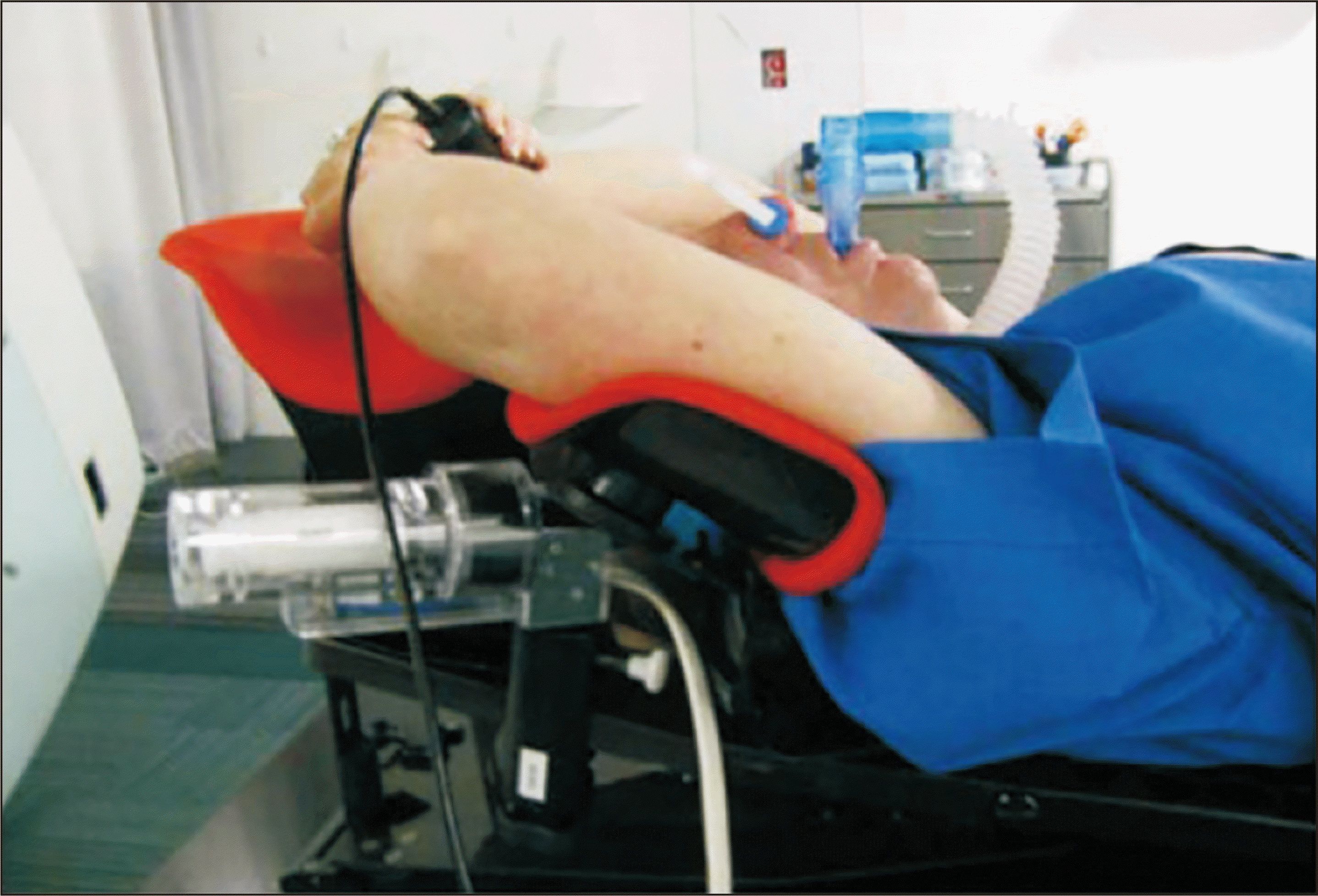
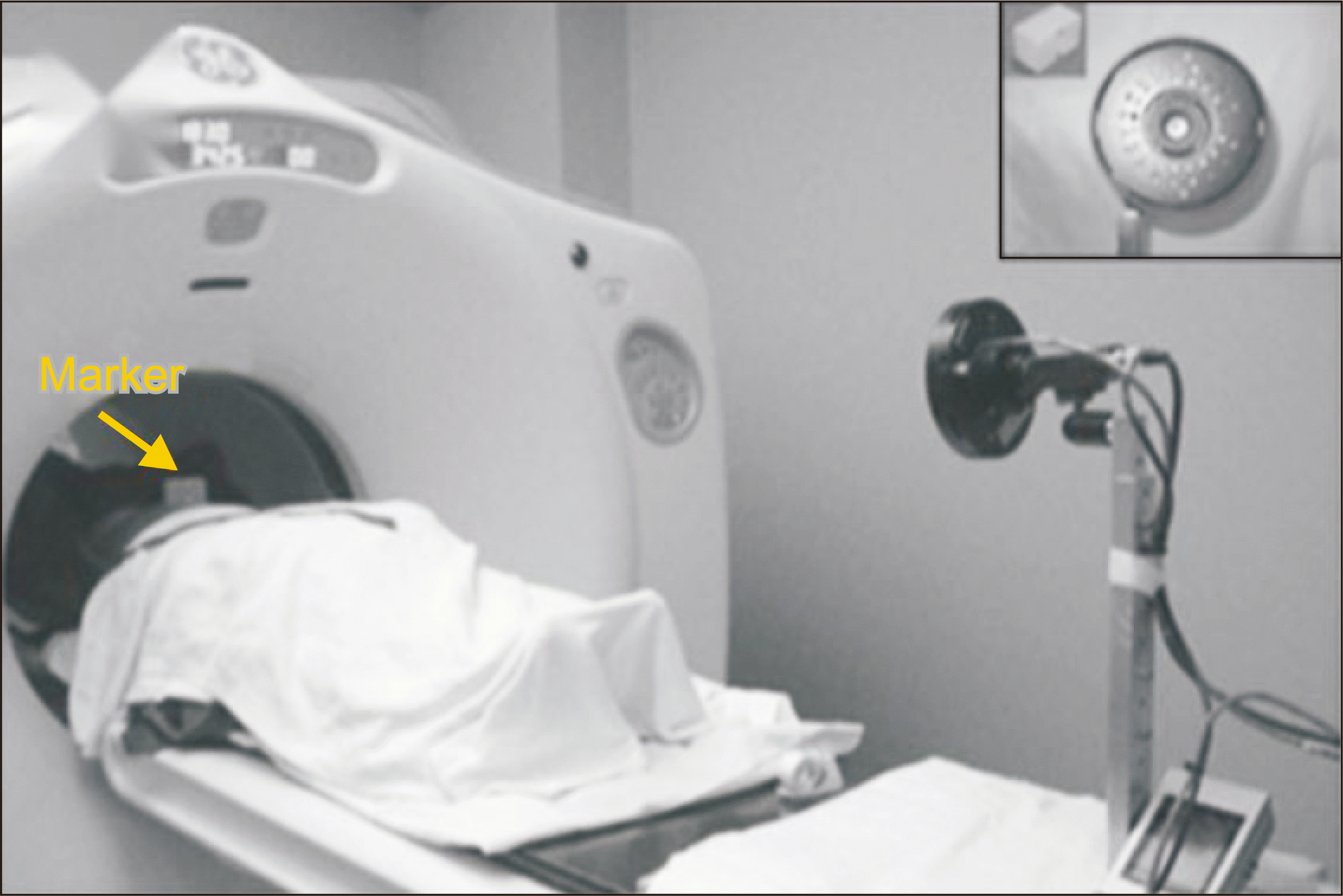
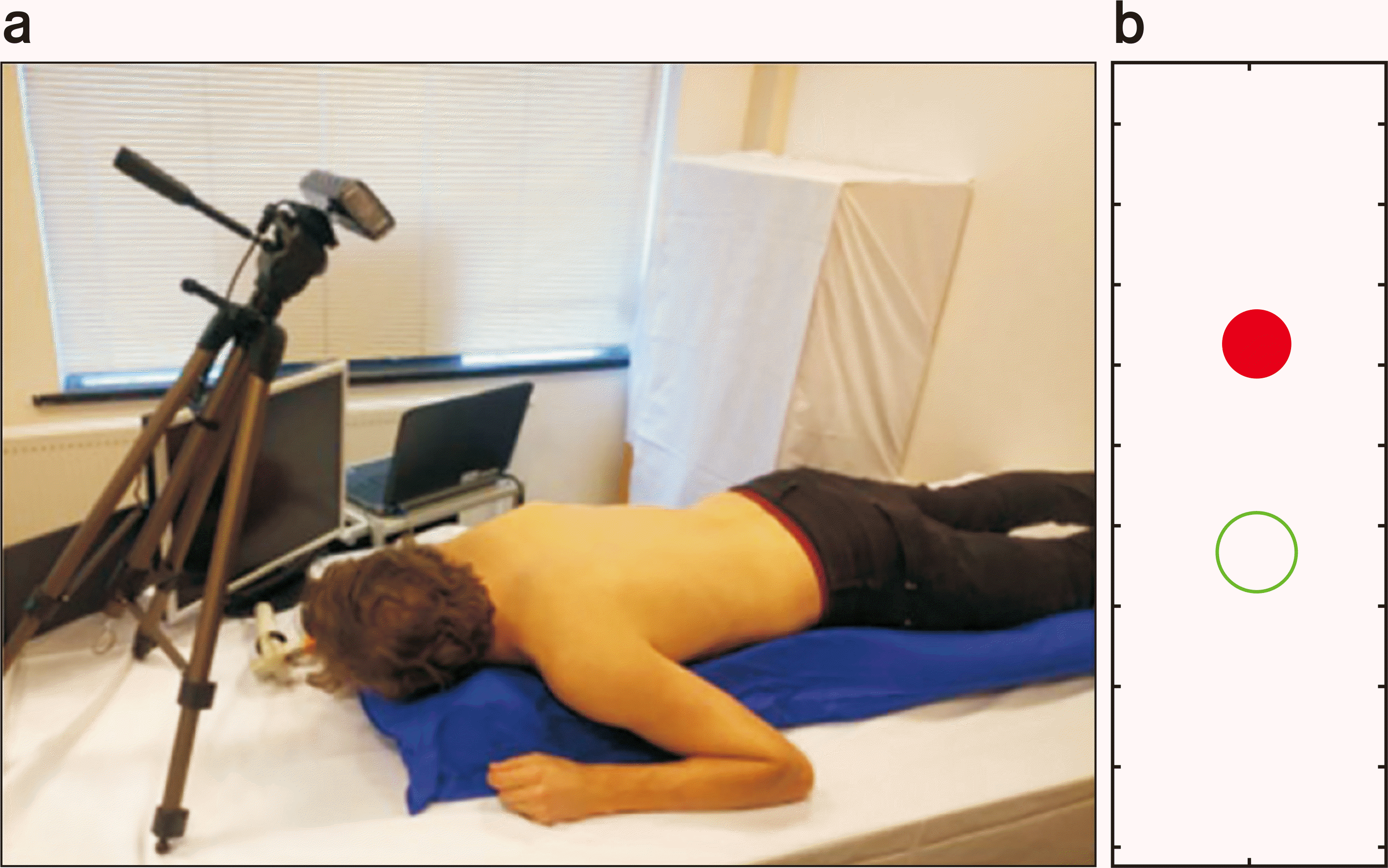
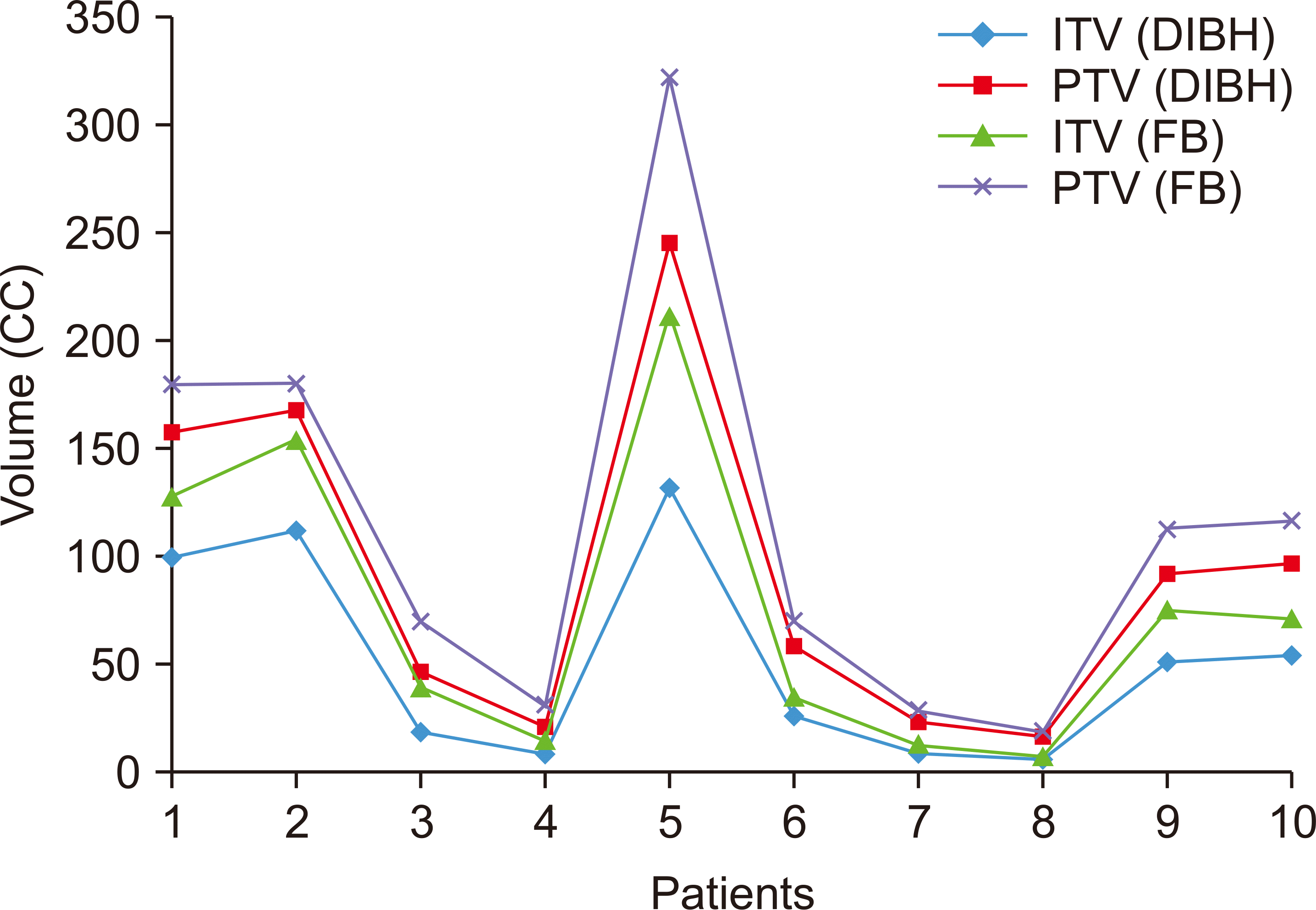



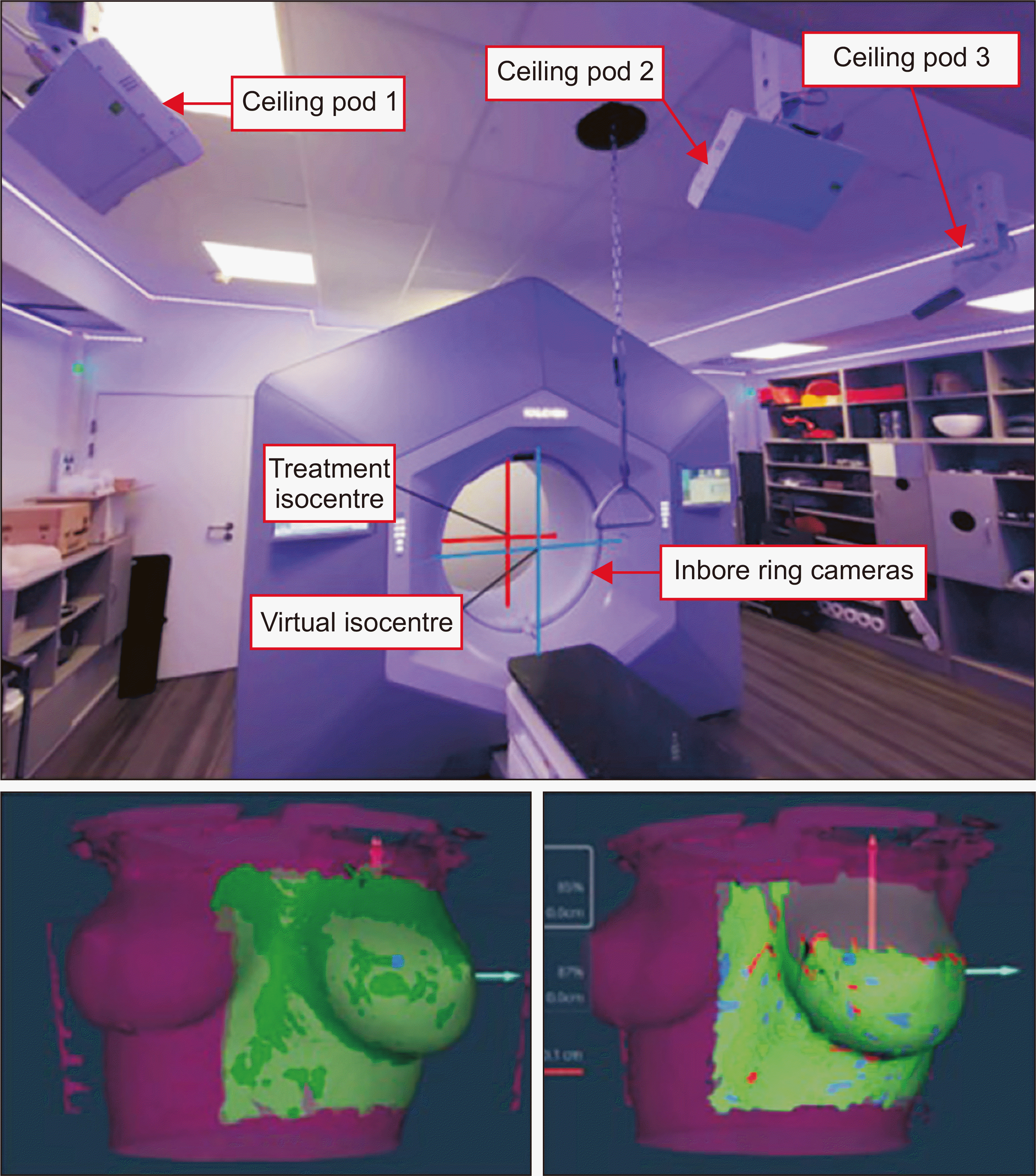




 PDF
PDF Citation
Citation Print
Print



 XML Download
XML Download